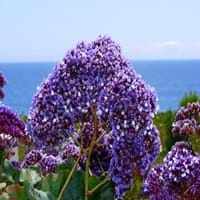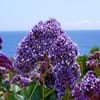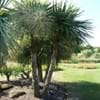Life Span
Perennial
Perennial
Type
Shrub
Bulb or Corm or Tuber
Origin
Hybrid origin
South America
Types
Ceanothus thyrsiflorus, Ceanothus maritimus
Pamianthe cardenasii , Pamianthe parviflora , Pamianthe peruviana
Number of Varieties
Not Available
Habitat
Hillside, Open Forest
All sorts of environments
USDA Hardiness Zone
7-11
8-10
Sunset Zone
1a, 1b, 2a, 2b, 3a, 3b, 4, 5, 6, 7, 8, 9, 14, 15, 16, 17, 18, 19, 20, 21, 22, 23, 24
21,22
Habit
Arching/Fountain-shaped
Clump-Forming
Flower Color Modifier
Not Available
Bicolor
Fruit Color
Not Available
Green
Leaf Color in Spring
Green
Dark Green
Leaf Color in Summer
Green
Light Green
Leaf Color in Fall
Green
Several shades of Green
Leaf Color in Winter
Green
Light Green
Leaf Shape
Arrowhead
Strap shaped
Plant Season
Spring
Spring, Summer, Fall
Sunlight
Full Sun, Partial Sun
Partial Sun, Partial shade
Type of Soil
Clay, Loam, Sand
Loam, Sand
The pH of Soil
Acidic, Neutral
Acidic, Neutral, Alkaline
Soil Drainage
Well drained
Average
Bloom Time
Spring
Spring, Late Spring, Early Summer, Summer, Late Summer
Tolerances
Drought
Drought
Where to Plant?
Ground
Ground, Pot
How to Plant?
Seedlings, Stem Planting, Transplanting
Offsets
Plant Maintenance
Medium
Medium
Watering Requirements
Never Over-water, Requires watering in the growing season
Keep the ground moist but not water-logged
In Summer
Lots of watering
Lots of watering
In Spring
Moderate
Moderate
In Winter
Average Water
Average Water
Soil pH
Acidic, Neutral
Acidic, Neutral, Alkaline
Soil Type
Clay, Loam, Sand
Loam, Sand
Soil Drainage Capacity
Well drained
Average
Sun Exposure
Full Sun, Partial Sun
Partial Sun, Partial shade
Pruning
Prune if you want to improve plant shape, Prune to control growth, Remove damaged leaves, Remove dead leaves
Pinch or prune as they grow to promote branching and bushiness, Remove damaged leaves, Remove dead branches, Remove dead leaves, Requires little pruning
Fertilizers
All-Purpose Liquid Fertilizer
All-Purpose Liquid Fertilizer, High phosphorus
Pests and Diseases
Red blotch
Leaf spot, Mosaic viruses
Plant Tolerance
Drought
Drought
Flower Petal Number
Single
Single
Foliage Texture
Medium
Coarse
Foliage Sheen
Glossy
Glossy
Attracts
Butterflies
Bees, Birds, Bumblebees, Butterflies, Hummingbirds, pollinators
Aesthetic Uses
Beautification, Landscape Designing, Showy Purposes, Used for decorating walls, fences, gates, hedges, etc.
Beautification, Bouquets, Ornamental use, Showy Purposes
Beauty Benefits
Not Available
No Beauty Benefits
Environmental Uses
Air purification
Air purification
Medicinal Uses
Not Available
No Medicinal Use
Part of Plant Used
Leaves
Not Available
Other Uses
Can be made into a herbal tea
Beneficial species for attracting pollinators, Decoration Purposes
Used As Indoor Plant
No
No
Used As Outdoor Plant
Yes
Yes
Garden Design
Feature Plant, Hedges, Rock Garden, Wall, Screening, Wind Break, Topiary, Bonsai, Espalier
Bog Garden, Container, Feature Plant, Foundation, Mixed Border, Water Gardens
Botanical Name
CEANOTHUS 'Cascade'
HYMENOCALLIS longipetala
Common Name
California Lilac
Peruvian Daffodil, Spiderlily
In Hindi
कैलिफोर्निया बकाइन
peruvian daffodil
In German
Kalifornien Lilac
peruvian daffodil
In French
Californie Lilas
peruvian daffodil
In Spanish
California lila
Pamianthe
In Greek
Καλιφόρνια Λιλά
peruvian daffodil
In Portuguese
California Lilac
peruvian daffodil
In Polish
Kalifornia Lilac
peruvian daffodil
In Latin
California Lilac
peruvian daffodil
Phylum
Chlorophyta
Magnoliophyta
Class
Magnoliopsida
Liliopsida
Order
Rosales
Asparagales
Family
Rhamnaceae
Amaryllidaceae
Genus
Ceanothus
Pamianthe
Clade
Angiosperms, Eudicots, Rosids
Angiosperms, Monocots
Tribe
Not Available
Clinantheae
Subfamily
Not Available
Amaryllidoideae
Number of Species
Not Available
Season and Care of California Lilac and Peruvian Daffodil
Season and care of California Lilac and Peruvian Daffodil is important to know. While considering everything about California Lilac and Peruvian Daffodil Care, growing season is an essential factor. California Lilac season is Spring and Peruvian Daffodil season is Spring. The type of soil for California Lilac is Clay, Loam, Sand and for Peruvian Daffodil is Loam, Sand while the PH of soil for California Lilac is Acidic, Neutral and for Peruvian Daffodil is Acidic, Neutral, Alkaline.
California Lilac and Peruvian Daffodil Physical Information
California Lilac and Peruvian Daffodil physical information is very important for comparison. California Lilac height is 180.00 cm and width 180.00 cm whereas Peruvian Daffodil height is 61.00 cm and width 61.00 cm. The color specification of California Lilac and Peruvian Daffodil are as follows:
California Lilac flower color: Blue
California Lilac leaf color: Green
Peruvian Daffodil flower color: White
- Peruvian Daffodil leaf color: Dark Green
Care of California Lilac and Peruvian Daffodil
Care of California Lilac and Peruvian Daffodil include pruning, fertilizers, watering etc. California Lilac pruning is done Prune if you want to improve plant shape, Prune to control growth, Remove damaged leaves and Remove dead leaves and Peruvian Daffodil pruning is done Pinch or prune as they grow to promote branching and bushiness, Remove damaged leaves, Remove dead branches, Remove dead leaves and Requires little pruning. In summer California Lilac needs Lots of watering and in winter, it needs Average Water. Whereas, in summer Peruvian Daffodil needs Lots of watering and in winter, it needs Average Water.





